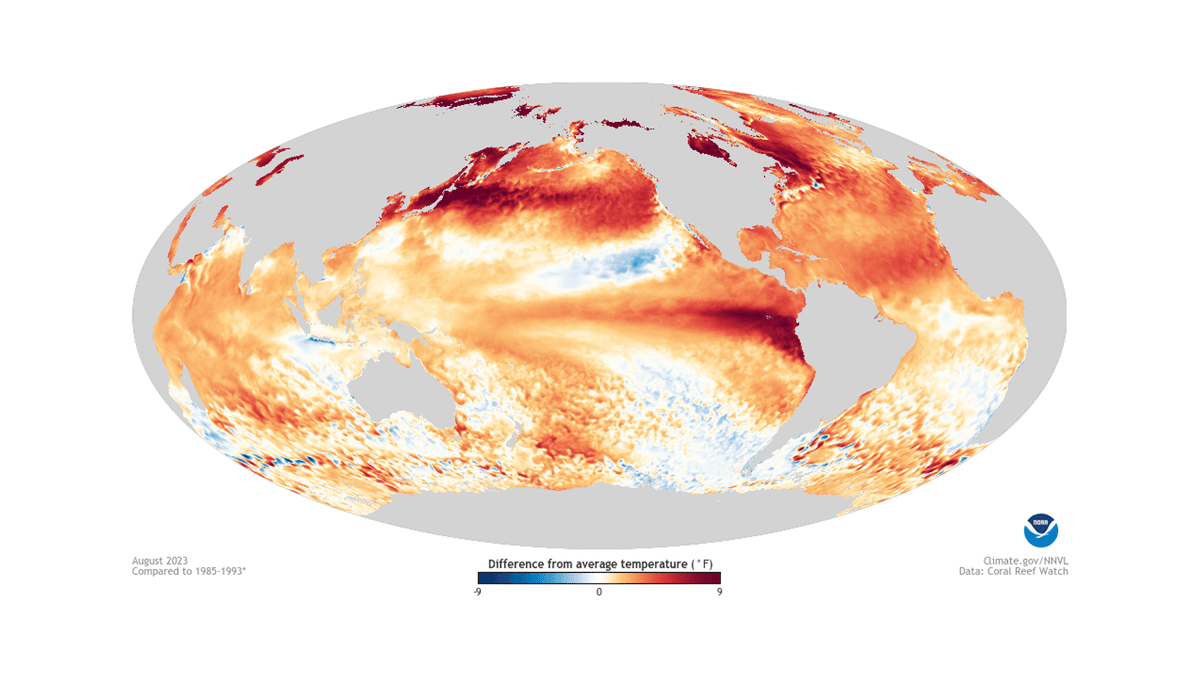
New modeling research has shown that the natural global climate phenomena known as El Niño and its cold counterpart, La Niña, have been occurring for the last 250 million years. Although these complex weather patterns are the drivers of extreme weather changes today, the research suggests they were significantly stronger in the past.
El Niño (Spanish for “little boy”) and La Niña (“little girl”) are part of the El Niño-Southern Oscillation (ENSO) cycle, which is the result of variation in ocean temperatures in the Equatorial Pacific. Under normal conditions, trade winds blowing westwards along the equator carry warm water from South America to Asia.
However, El Niño and La Niña cause disruptions to this normal situation by shifting the jet stream – an important strong wind that blows across the world from west to east – further south or further north, respectively.
When this happens, weather patterns across the world are affected, including in the US. For instance, El Niño usually brings with it hotter, dryer conditions to the northwestern US and unusually high levels of rain to the southern US. In contrast, La Niña produces dryer conditions in the south, often leading to droughts, and making winters harsher in the northwest.
These effects can also be felt elsewhere; for example, La Niña has also been associated with droughts in East Africa and contributed to more severe monsoons in South Asia.
But while this oscillation can be troublesome today, it seems the temperature swings associated with them were more intense in the past. This is according to researchers at Duke University and their colleagues, who have modeled El Niño and La Niña events in the distant past.
Previous research has prioritized the significance of ocean temperatures while paying less attention to the surface winds that we know are also an important factor, Shineng Hu, an assistant professor of climate dynamics at Duke University’s Nicholas School of the Environment, explained in a statement.
In their new study, Hu and colleagues show that the magnitude of past oscillations was dependent on two factors: the thermal structure of the ocean and what they call the “atmospheric noise” of the ocean surface winds.
“So part of the point of our study is that, besides ocean thermal structure, we need to pay attention to atmospheric noise as well and to understand how those winds are going to change.”
Like the oscillations of a pendulum, the atmospheric noise – the wind – can provide random kicks to the metaphorical pendulum, so both the noise and the ocean thermal structure combine to make the weather oscillations more or less powerful.
“In each experiment [we ran], we see active El Niño Southern Oscillation, and it’s almost all stronger than what we have now, some way stronger, some slightly stronger,” Hu added.
Using the same climate modeling tools as the International Panel on Climate Change (IPCC), the team was able to simulate weather conditions from 250 million years ago. These tools are usually used by climate researchers to predict future developments due to climate change, but they can also be run backward to glimpse at what’s already happened.
To be clear, it was beyond infeasible for the researchers to model every year in this simulation, given the significant expanse of time it would represent, but they were able to assess conditions in “slices” every 10 million years. The simulation took months to complete, but it provided a model for thousands of years.
“The model experiments were influenced by different boundary conditions, like different land-sea distribution (with the continents in different places), different solar radiation, different CO2,” Hu added.
At different points in the past, the solar radiation reaching the planet was around 2 percent lower than it is now, but, at the same time, CO2 levels were higher, which made the atmosphere and oceans warmer than today.
In particular, 250 million years ago, during the Mesozoic period, South America was located in the middle of the supercontinent Pangea, and the weather oscillations took place to the west, in Panthalassa – the vast superocean that surrounded the massive landmass.
These simulations are valuable for understanding how the ENSO may behave as climate change continues. The subject has been debated for some time and past research suggests that weather events may become stronger in the future as warming continues.
As such, this new study suggests that the ENSO will be substantially influenced in the future, due to changes in the ocean’s thermal structure and atmospheric noise, and all the uncertainties that come with it.
As Hu stated, “If we want to have a more reliable future projection, we need to understand past climates first.”
The study is published in PNAS.
Source Link: El Niño and La Niña May Have Affected Weather For At Least 250 Million Years